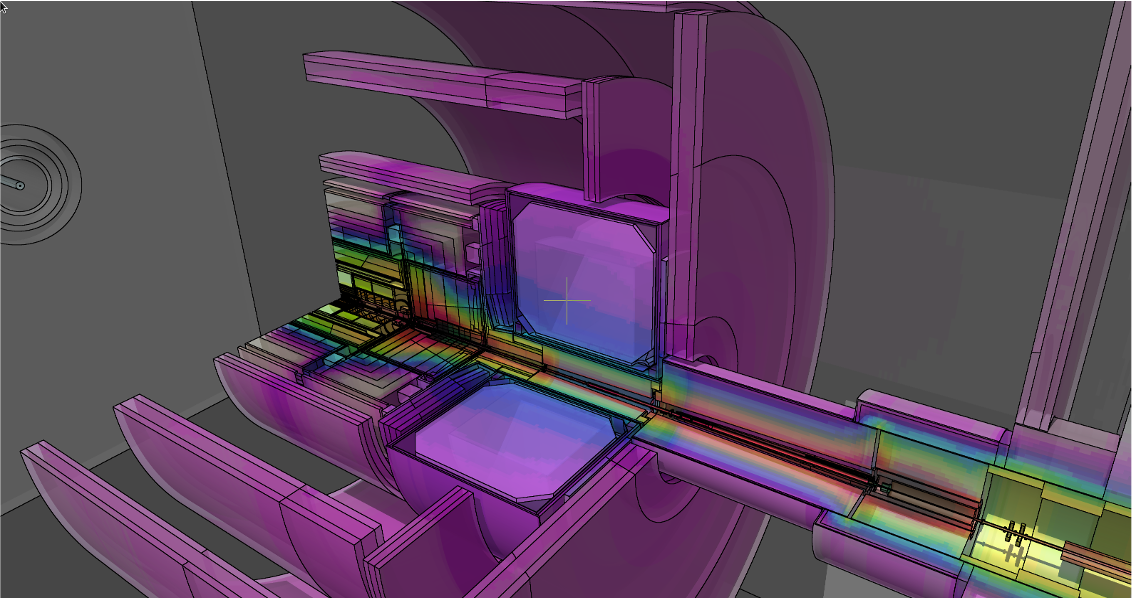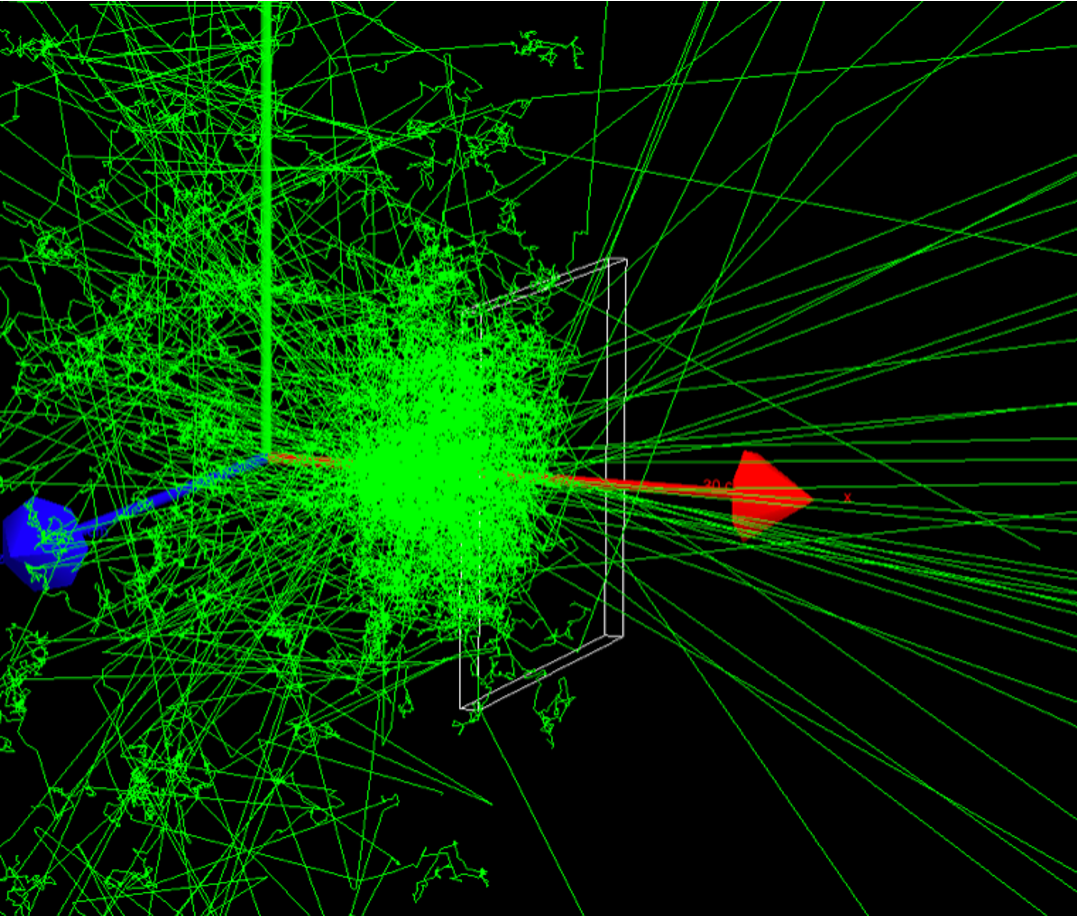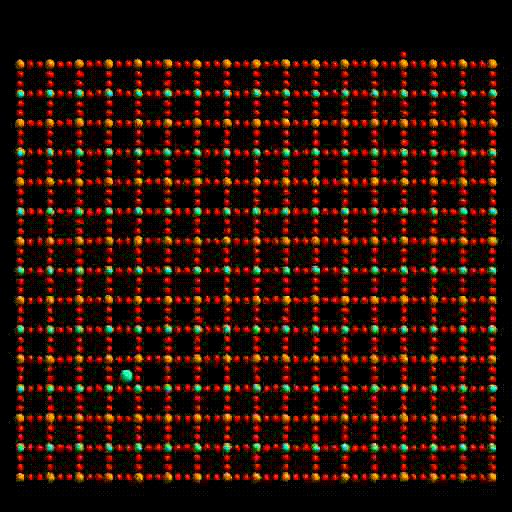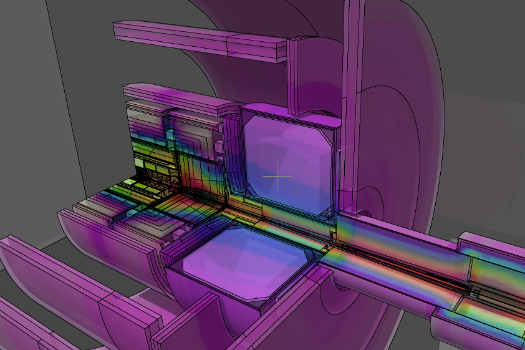Of particular importance is understanding the degradation of device performance over time (electrical, mechanical and thermal).
Radiation Environment Simulation
Over 20 years of internationally recognised expertise in the simulation of radiation environments, such as those found in the accelerator, nuclear, medical and space industries. High fidelity radiation simulation codes such as FLUKA and Geant4 are employed to study radiation backgrounds and derive important design parameters such as ionising-dose rate or maximum neutron flux. Simulation also provides a very cost-effective solution for shielding design studies.

Detector modelling and neutron fluxes in the ATLAS experiment at the LHC, CERN.
Detector Response Simulation
Simulating detector response to radiation using the Geant4 or FLUKA high fidelity particle transport codes allows us to quickly evaluate and optimise detector designs. Such simulations are particularly well suited for studying the signals generated in a wide range of materials and detector geometries, thus minimising the costs associated with hardware testing in radiation facilities.

Geant4 simulation of a neutron interaction in boron loaded organic semiconductor material.
Thermal Performance Simulation
The damaging effects of radiation on our detector systems can lead to significant increases in power consumption over time and the heat generated needs to be carefully considered. We use finite element software (ABAQUS) software to simulate thermal heat transfers and ensure the designs will not suffer damaging or destructive scenarios such as thermal runaway.

Temperature profile of integrated detector module stave derived from Abaqus FEA simulations.
Radiation Damage Theory
Simulating radiation effects at the atomic level is achieved through molecular dynamic (MD) simulations. Our experts are co-developers of the UK’s flagship MD simulation software DL_POLY, which allows the effects of radiation to be studied in microscopic detail. Such simulations are crucial for developing the new materials needed for the encapsulation of high level nuclear waste or the extreme high flux environments in fusion reactors.

DL_POLY material damage simulation (U recoil in zircon).
